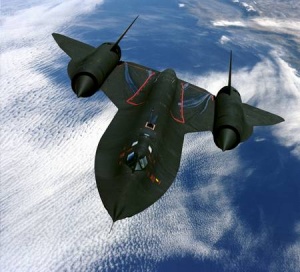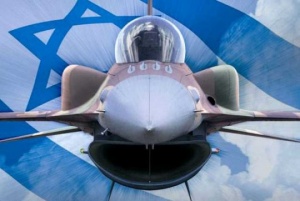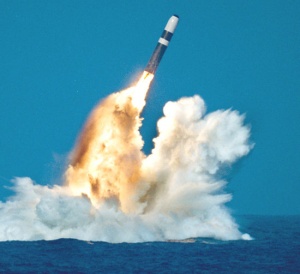Lockheed Martin
The 1995 merger of Lockheed and Martin Marietta, two aeroplane manufacturers, created the global company Lockheed Martin, which today is best known for its production and development of high technology weaponry and warplanes.
In 2016, Lockheed retained its place at the top of the global arms league, selling nearly $41 billion of military equipment according to data from SIPRI.
Contents
Background
In 2004, Lockheed Martin was ranked No. 135th on the Fortune Magazine’s list of the world’s 500 biggest corporations with $35.5 billion in revenue. According to Richard Girard:
- This figure places it among the top arms manufacturers in the United States along with Boeing ($52.55 billion in revenue 2004), Northrop Grumman (29.8 billion in revenue 2004), Raytheon ($20.2 billion in revenue 2004), and General Dynamics ($19.5 billion in 2005). These 5 corporations are perennially in the top 6 (British Company BAE is consistently ranked in the top 6) on the Defense News’ Top 100 leading international defense companies. Companies are ranked according to the amount of annual revenue from defense contracts. Lockheed Martin has been ranked 1st every year between 1999 and 2004. The total revenue from defense contracts of the big 5 US arms contractors in 2002 was $82.7 billion or 41.9% of the total revenue from defense contracts of the top 100 companies. The remaining 95 companies on the list received $114.6 billion in revenue from defense contracts. These statistics demonstrate how the consolidation of the arms industry after the cold war has resulted in a small group of multibillion-dollar corporations based in the United States. The relationship between economic globalization, militarism, and security has become critical providing greater protection for corporations through a war economy. The move towards greater militarization came a decade after the end of the cold war, during which time the arms industry went through major changes. [1]
Government contractor
Each year Lockheed Martin makes $17.5 billion from the US Department of Defense. In recent years Lockheed Martin has provided much more than military services and contracts to the American government, they have also been awarded huge contracts from a range of federal agencies including the Social Services Administration, The Department of Homeland Security, the Department of Energy, the Federal Aviation Administration, the US Postal Service, the Department of Transportation, The Federal Bureau of Investigation and the Census Bureau. The corporation also takes almost $6 billion a year in revenues from international customers. [1]
US political connections
Influencing foreign policy
"I wrote the Republican Party's foreign policy platform." boasted Bruce Jackson, vice president of Lockheed Martin between 1993-2001, at the Republican Convention in 2000.[2]
According to The World Policy Institute's Arms Trade Resource Center, Jackson's political influence is vast. "In February 2003, the White House was feeling anti-war pressure from France, Germany and other members of what they derided as "Old Europe." A letter signed by 10 Central and Eastern European nations positioning themselves as the "New Europe," strongly supported Washington's war in Iraq, creating a split in Europe, that helped the Bush administration make a stronger case for war. Bruce Jackson, who has been working with the so-called Vilnius 10 since 2000 as they seek NATO membership, initiated and helped draft that statement." [3]
Jackson, who also runs the Project on Transitional Democracies, is a long-time supporter and active proponent of the expansion of NATO to include former Soviet states. This has enabled Lockheed to create a whole new market for their products. By 2003 Jackson's efforts came to fruition for Lockheed when his former company signed a $3.5 billion contract with Poland for 48 F-16 fighter planes. Which Poland will purchase with $3.8 billion in loans from the U.S. [4].
Lynne Cheney, wife of former Vice President Dick Cheney, served on Lockheed's board, taking home $120,000 dollars per year.
In 1997-98 alone, Lockheed spent $10.2 million lobbying U.S. politicians.
Lockheed Martin in the UK
circa 2007
According to Lockheed's website, its UK operations include: [5]
- New orders for the Joint Strike Fighter, these warplanes are built in partnership with BAE and Northrop Grumann for the Navy and Airforce
- NATS sustainment provided the Air Traffic Control systems for Swanwick in England and in Prestwick Scotland.
- Merlin, Navy Helicopter Programme
- London Underground,
- UK Cooperative Engagement Capability [UKCEC], supplies the UK with rocket launchers, radars and missiles
- Metropolitan Police C3I, provide Command, Control, Communication and Information Systems
- Warship Electronic Chart Display and Information System [WECDIS]
- Battlegroup Command and Control Trainer [BC2T].
- Trident, Lockheed provide Trident ballistic missile submarines
- Advanced Postal Sorting Technologies, Lockheed have a contract from Royal Mail
- In the UK 2001 Census Lockheed processed over 30 million census forms, they are currently one of two companies left in the running to land the 2011 UK Census.
UK Contracts
In March 2017 the US Department of Defense F-35 Joint Program Office awarded a contract worth more than £80m (US$102.2m) to Lockheed to deliver the initial training, engineering, maintenance and logistics support for the UK’s F-35 Lightning II fleet over a three year period. A BAE Systems news release stated that:
- Lockheed Martin has sub-contracted work worth £40m to BAE Systems and together the two companies will form a team of more than 100 skilled technicians at RAF Marham, which will provide engineering and technical expertise, deliver air-crew and ground-crew training, facilitate routine maintenance and help to manage the jets’ global supply chain. BAE Systems will take the lead sustainment role for F-35 Lightning II in the UK with Lockheed Martin continuing as prime contractor for global operations. [6]
UK team 2017-18
Board
- Peter Ruddock, chief executive officer
- John Mollard
- Alan Lines
Revolving door appointments
- Christopher Williams, head of Lockheed UK government affairs. Previously worked in the Cabinet Office
- Mark Green, senior programme manager, Mission Systems and Training.
- Jonathan Ager (Air Commodore), programme director. Was previously assistant chief of staff at RAF Air Command until late 2015.
Advisers
- Lord Peter Ricketts, former FCO permanent secretary and UK national security adviser under Prime Minister David Cameron
Former UK board members
- Jonathan Band, former head of the British Navy, since May 2010 [7]
- Sir David Manning, former FCO diplomat
- Lord John Patten, stepped down in January 2016
Former executives and board members circa 2007-2009
- Ian Stopps Chief Executive retired 2009, later appointed board chairman of Raytheon
- Robert Coutts
- Robert Trice
Non-Executive Directors
- Lord John Patten
- Sir Anthony Cleaver
- Sir Jock Slater
- Ronald Christenson Vice President & Group Managing Director LMUK Integrated Systems
- Bob Johns Managing Director LMUK Transportation and Security Solutions
- Bill Freeman Managing Director LMUK Simulation, Training and Support
- Bill Haight Managing Director Atomic Weapons Establishment plc
- Andy Robertson Managing Director LMUK Distribution Technologies [8]
Lobbying firms and trade bodies
- Interel Consulting UK[9]
- APCO Worldwide (current)[10]
- In 2008 Lockheed Martin was listed as a member of the American Benefits Council[11].
Sponsoring Israel Herzliya Conference 2008
In 2008, Lockheed Martin sponsored the 8th Herzliya Conference in Israel[12].
References
- ↑ 1.0 1.1 Richard Girard November 2005, Polaris Institute, The Weapons Manufacturer That Does it All last accessed 9 November 2007
- ↑ Chris Arsenault, July 2004 The Occupation of Lockheed Martin Last accessed November 9th 2007.
- ↑ World Policy Institute, Research Projects, May 16th 2003 Lockheed Martin Mega-Merchant of Death Last accessed November 11th 2007
- ↑ Ibid 4
- ↑ Lockheed Martin Company Website The UK & Lockheed Martin Last accessed 9 November 2007
- ↑ F-35 Lightning II's UK arrival moves closer with contract award, 31 March 2017
- ↑ CAAT, Political Influence Database, accessed 8 Feb 2018
- ↑ Lockheed Martin Company Website Company Structure Last Accessed 9 November 2007.
- ↑ Register 1st September 2014 - 30th November 2014 APPC, accessed 29 January 2015
- ↑ APCO Worldwide register Dec15-Feb16, APPC, accessed 15 April 2016, APPC register to 28 February 2018,, last accessed 23 March 2018
- ↑ American Benefits Council Memberships Accessed 26th February 2008
- ↑ The Annual Herzliya Conference Series: on the Balance of Israel's National Security (2008) Conference Conclusions. Accessed 12th August 2008


